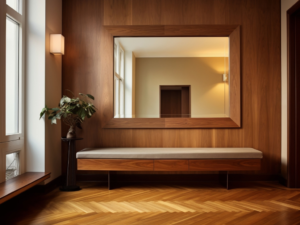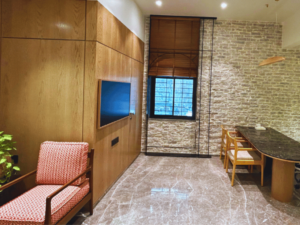Acrylic paint is a really lively medium, and it occupies that space somewhere between the bold opacity of oils and the flowing transparency of watercolours. This is why it is so eagerly seized upon by beginner and professional artists alike. It dries fast, permitting quick layering for experimentation, and is capable of imitating texture ranges from crispy glaze technique to thick impasto strokes. It can be non-toxic, water-based, and practically an adhesive to almost any surface, even to paper and fabric from canvas and wood.
- Use Paints of High Quality
– Professional-grade acrylics (e.g. Golden, Liquitex Heavy Body) generally have richer pigments and better handling than student-grade paints.
– Avoid very cheap paints, they usually look chalky and/or very transparent when dry.
- Master Carefully Brush Control
– Use different brushes (filberts, rounds, and flats) for varying effects.
– Clean brushes often so they do not get ruined by drying paint.
- Apply Proper Grounding to Your Surface
– Avoid ground absorption with gesso on canvas or wood panel. This will enhance adhesion to paint.
– Sand these in between coats for an ultra-smooth finish.
- Impasto For Texture
– Palette knives or thick paint can be used to create some really expressive 3-D textures.
– This would generally be effective with heavy body acrylics or even modelling paste.
- Organise Your Palette
– Group colours based on temperature (warm/cool) to keep from muddling them.
– Use a stay-wet palette or mist the paints down with water to keep them from drying.
- Glaze to Achieve Depth
– For an effect of luminous depth, glaze thin layers of colour over areas that are already dry.
– Mix with glazing medium for an extra smooth application.
- Work in Layers
– Start with thinner washes as underpaintings, then gradually build them up to increase opacity.
– Let layers dry completely to avoid muddiness.
- Sign Your Work Appropriately
-Get a small brush or fine liner and use a contrasting colour (but be tasteful).
-Place it cleverly in a corner where it doesn’t jump out at you.
- Control the Drying Time
– Slow-dry mediums like Golden Open Acrylics or retarders can extend wet time.
– Light misting of activated paint could give a very short time.
- Thin with Mediums (Not Just Water)
– Thinning too much with water will make the paint film weak.
– Using acrylic mediums (whether that is the matte medium, glossy medium, or flow improver) allows more control.
- Pay Attention to the Edges
– Soft focus-blended edges add depth; hard focus takes them away.
– Dry-brush through these soft transitions.
- Use Complementary Colours in Shadows
-Thus, you should instead, in on shadows, make a dash with complementary colours like purple in yellow light instead of merely dropping black.
-To simply put, it’s just trying to keep those shadows alive and real.
- Don’t Over-Blend
– Acrylics dry so fast that over-blending will dull the colour.
– Softly blend with a slightly damp brush or use wet-on-wet to help.
- Step away and evaluate the work.
-Develop the habit of stepping back to view your painting from a distance. This way, you can see if your composition and values are on the right track.-
-A mirror will do; how about toss it up off the wall for a photo-bombing ‘N Learn’ show, having fun with your painting, and quietly finding mistakes.
- Mess Up the Brush Strokes
-If you bring motion and energy with your directional strokes.
-The smooth strokes should never outlive their usefulness, room for glimpses of the underpainting.
- Put Varnish Over Your Painting
-Final varnish, matte, satin, or gloss, is available and will protect and unify the finish.
-Remember to wait for at least 1-2 weeks to let the painting dry before applying varnish.
- Expressive Practice and Experimentation
–From shelves of toilet papers were masterly results built up through practice sessions with a bit in-absentia and in the most different paths-taking on different mediums, tools, and styles.
-Just think about that for a moment- how did the master artists pick apart and analyse their techniques?

Also read: Top 10 Tips for Applying Acrylic Paint on Wood Furniture
Acrylic paint is a versatile and popular choice for transforming wood furniture due to its durability, ease of use, and vibrant colour options.
And here’s an ultimate piece of pro advice -keep your workspace clean! Dried acrylic paint is a nightmare to clean once it has dried. Therefore, just rinse your brushes off after using them and put the paint away for next time.
All of these discussed techniques should be mixed and matched and implemented in all the right ways so as to make one’s acrylic pictures impressive, purposeful, and professional. Happy painting!




